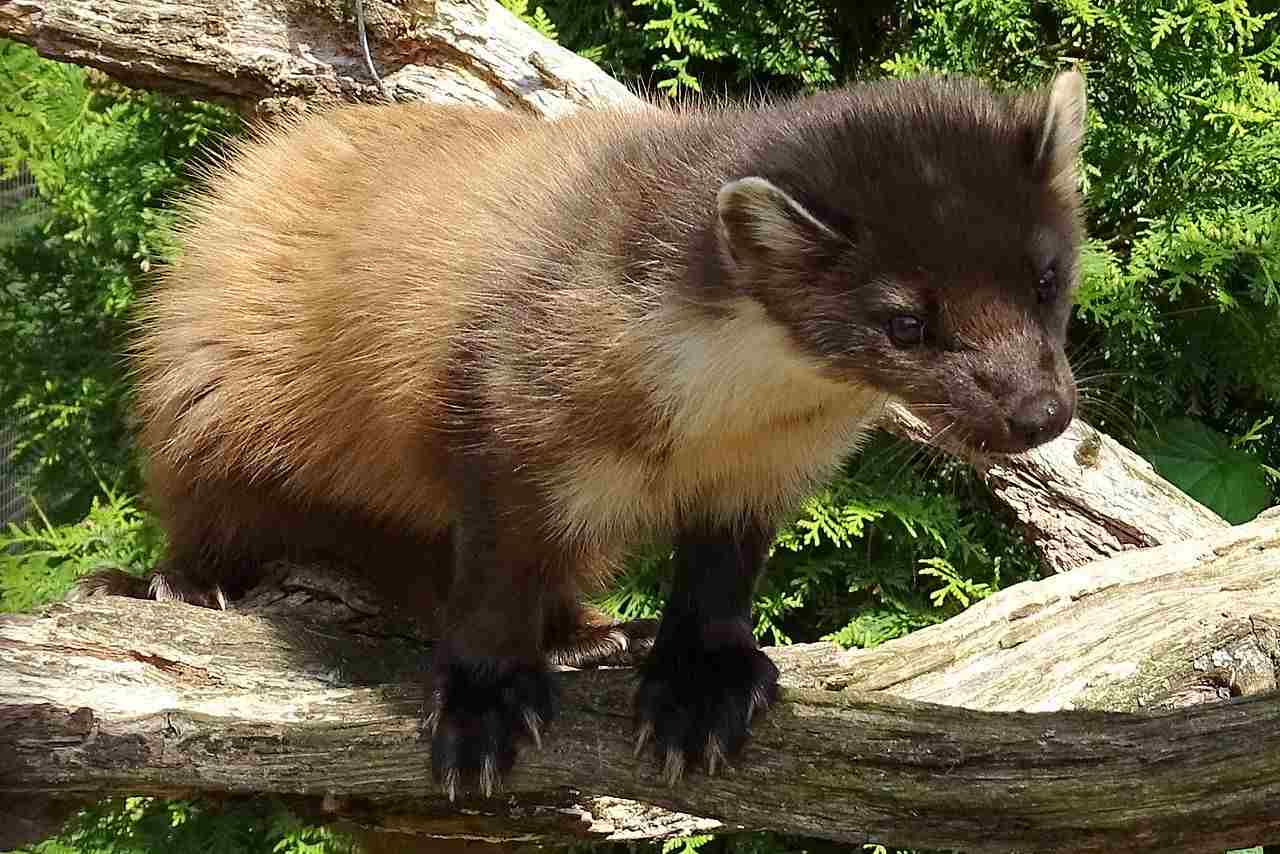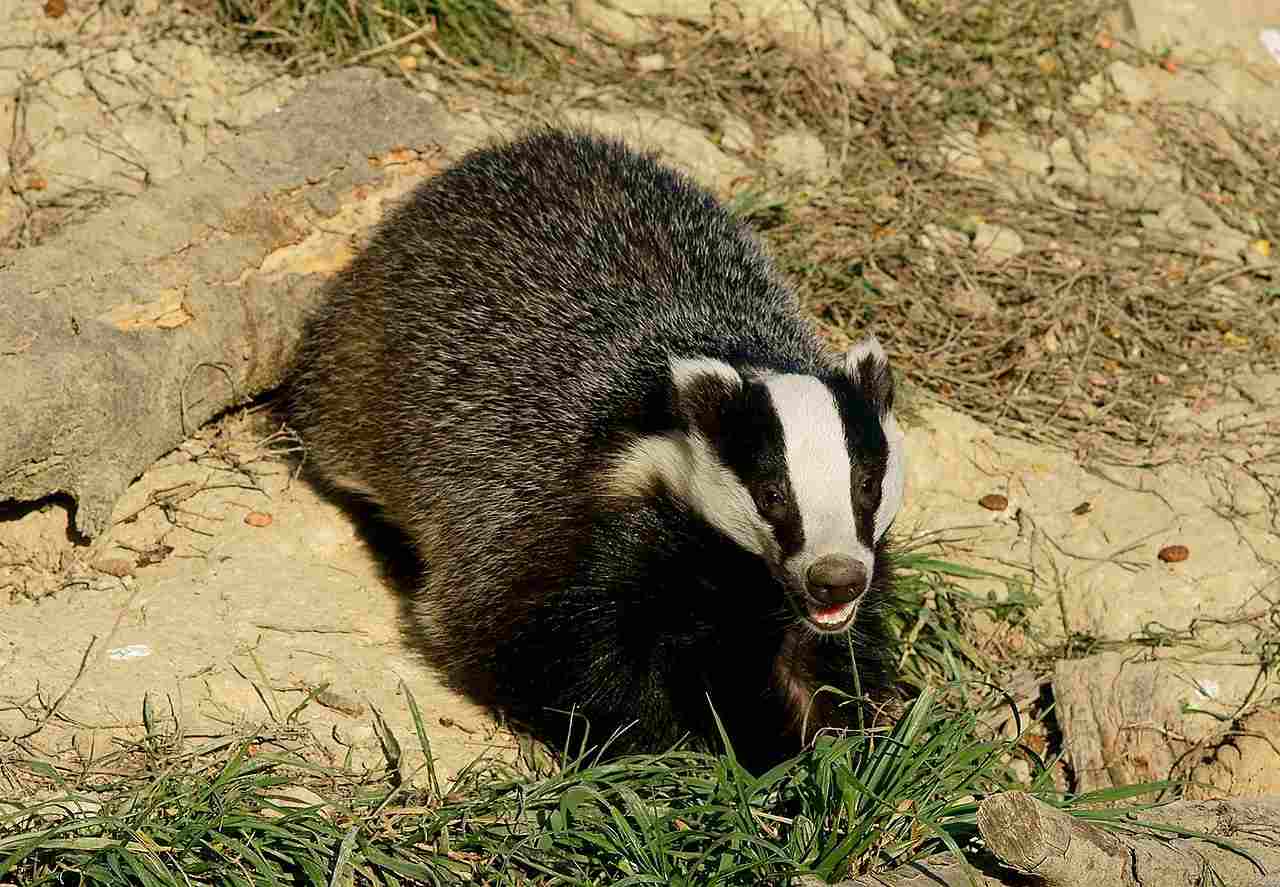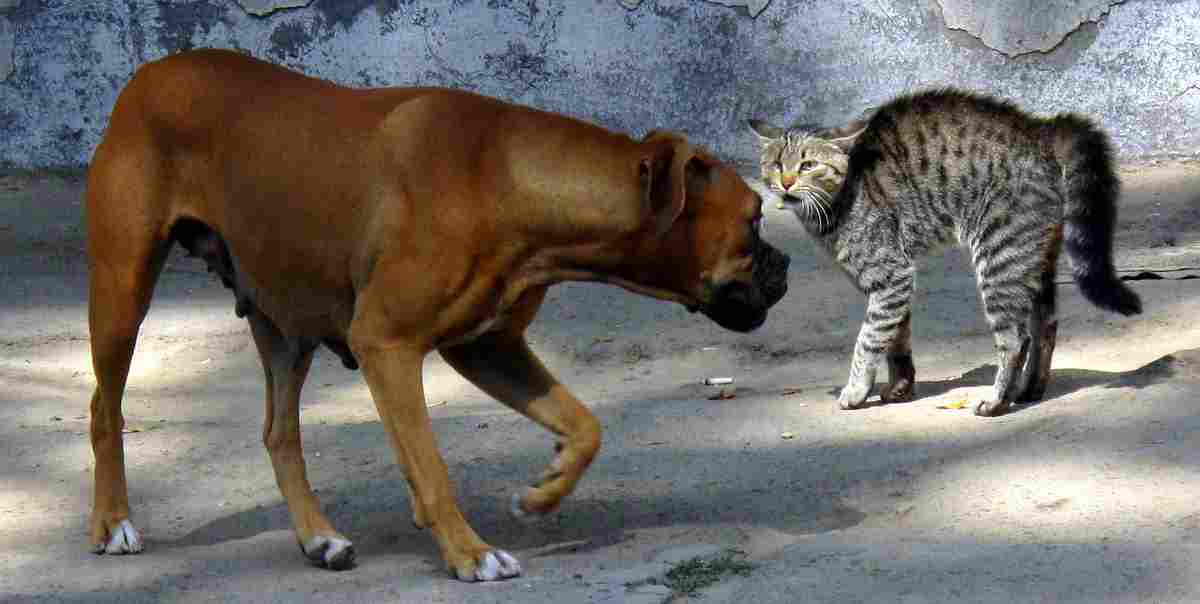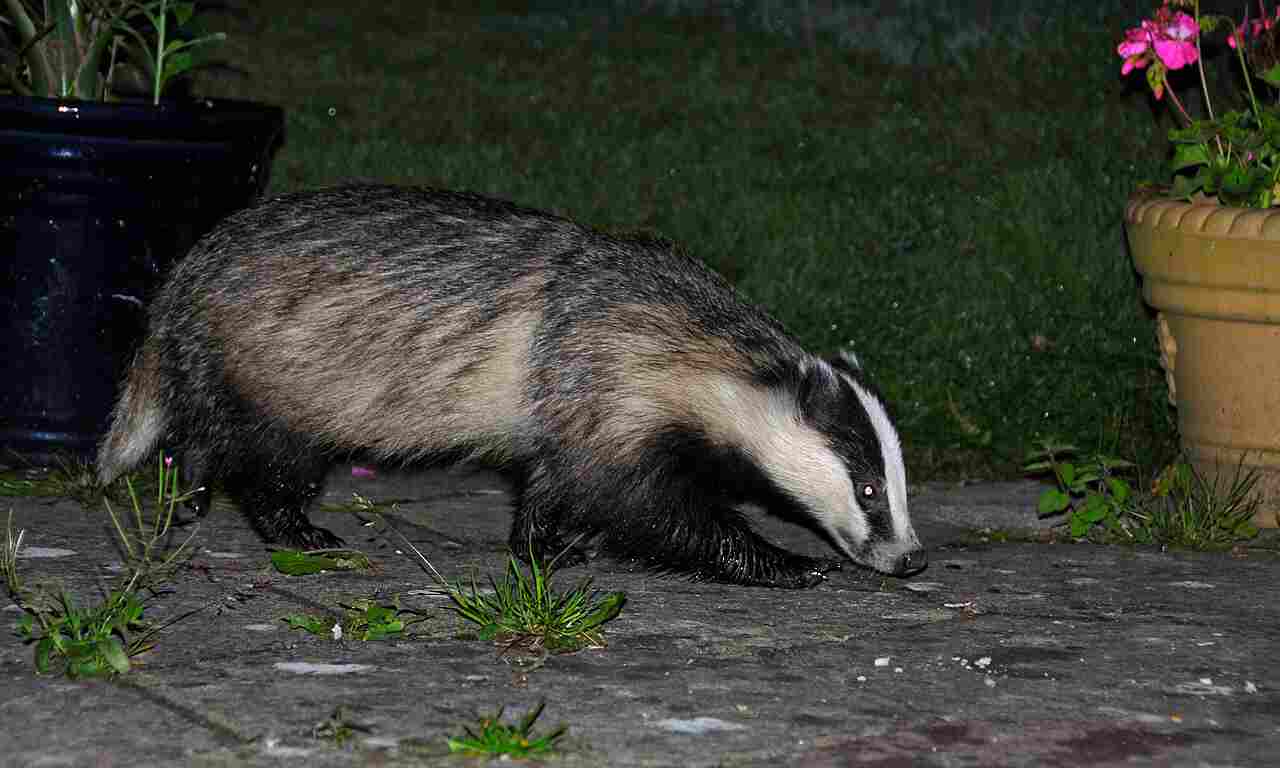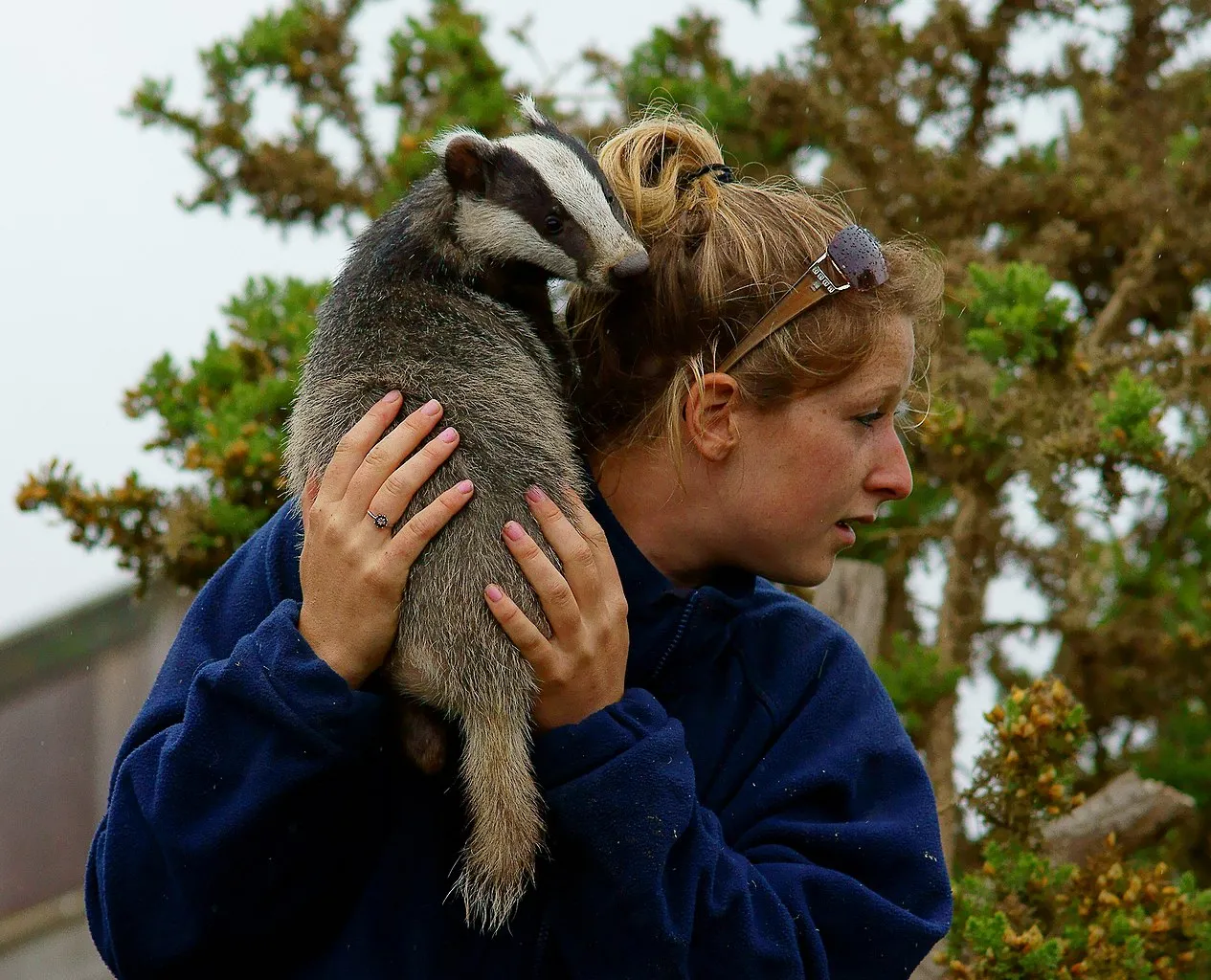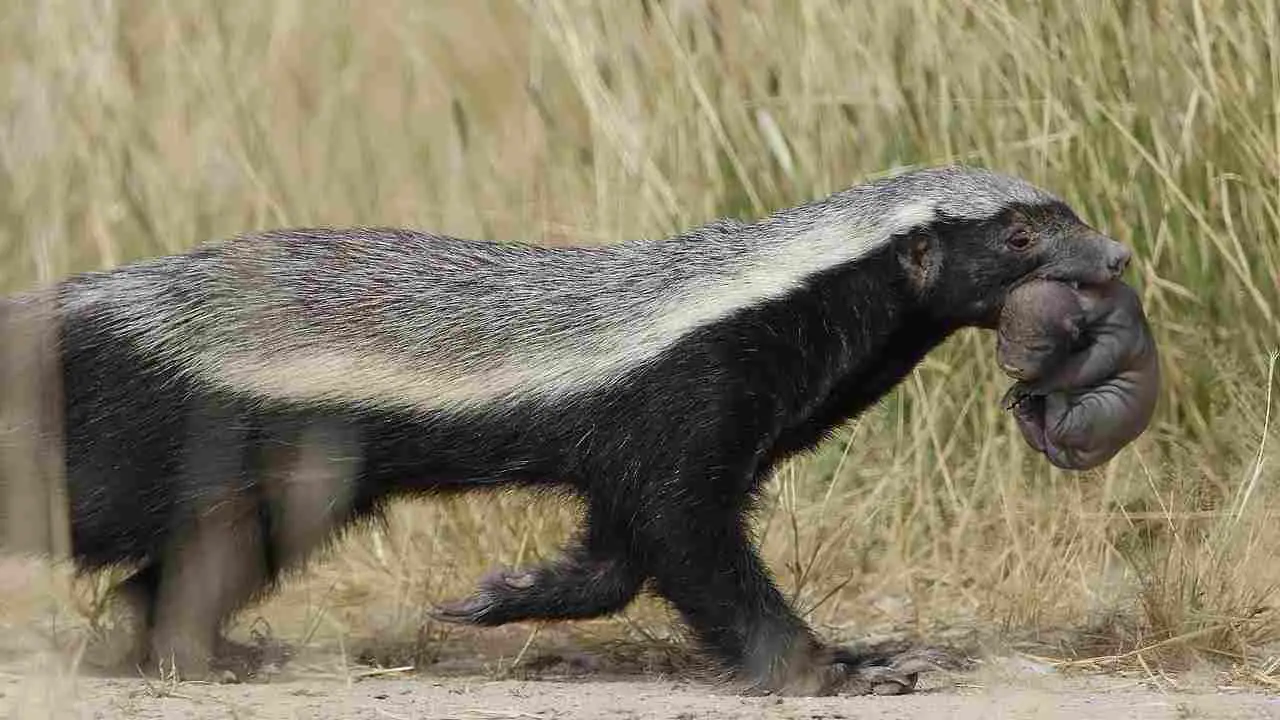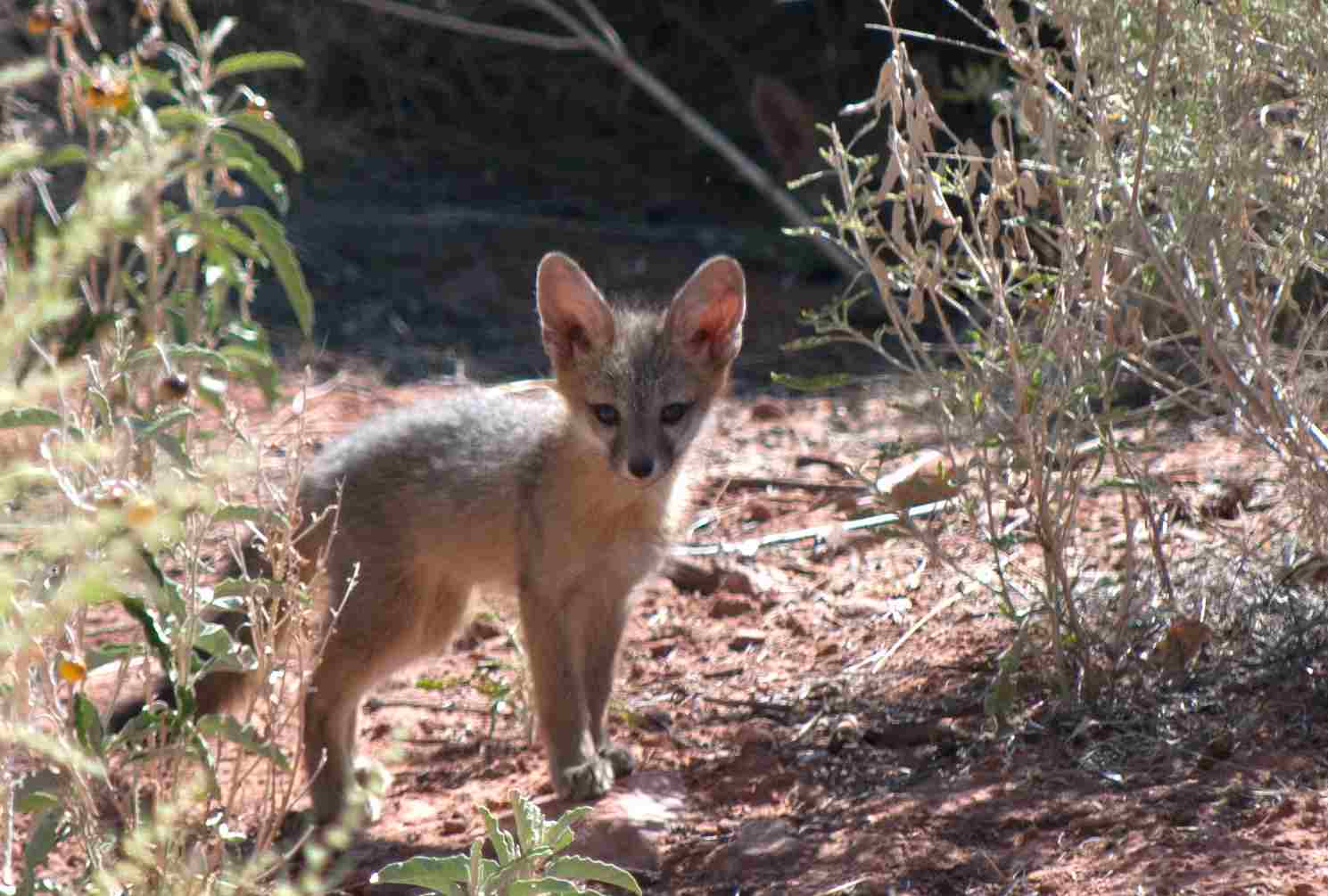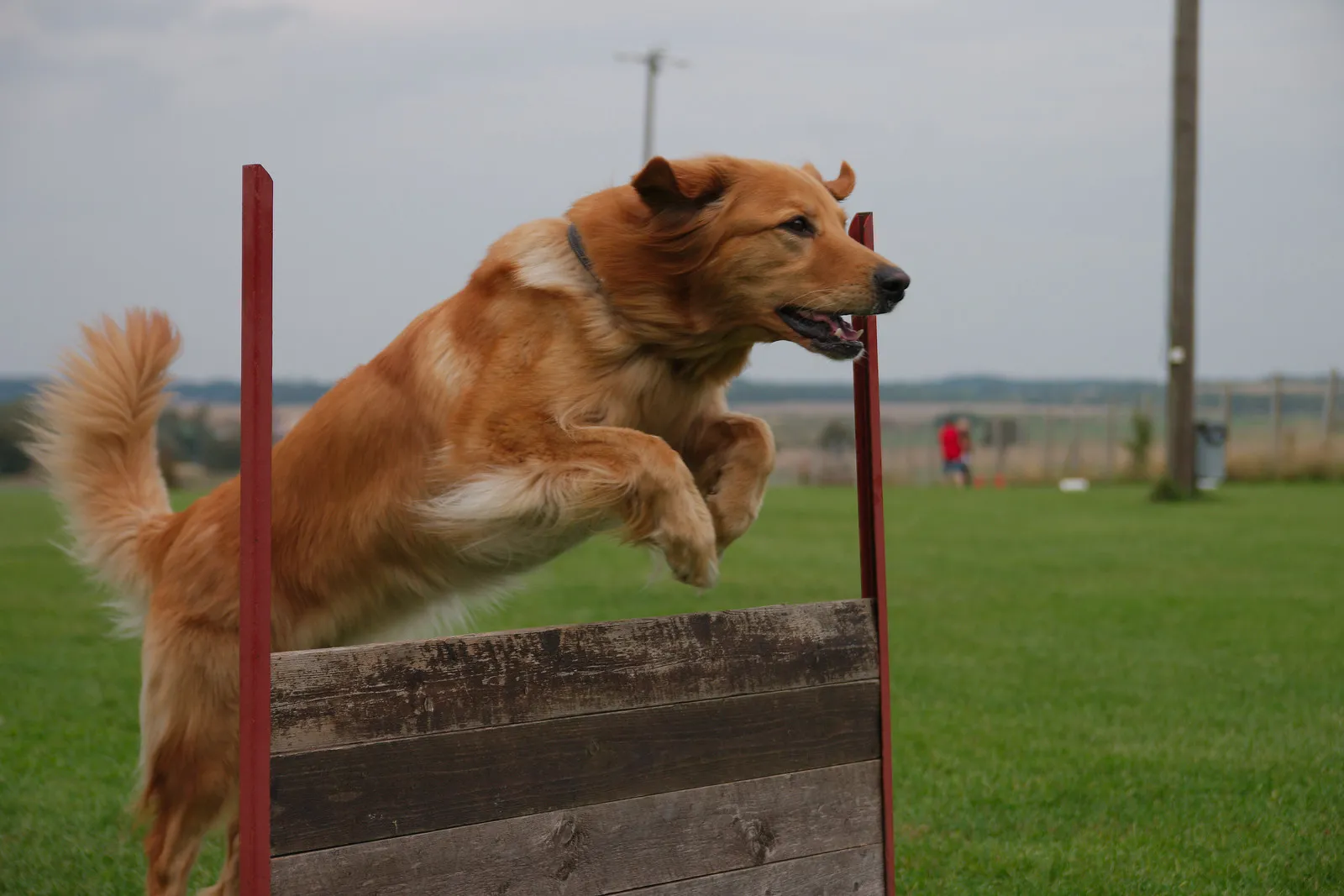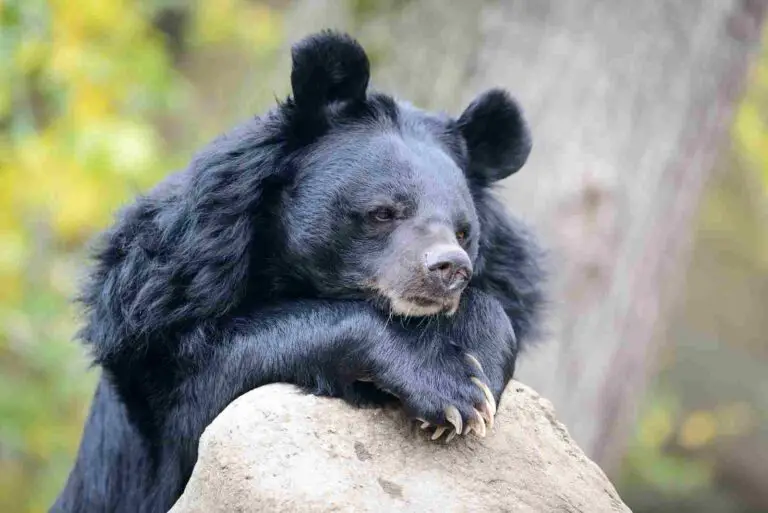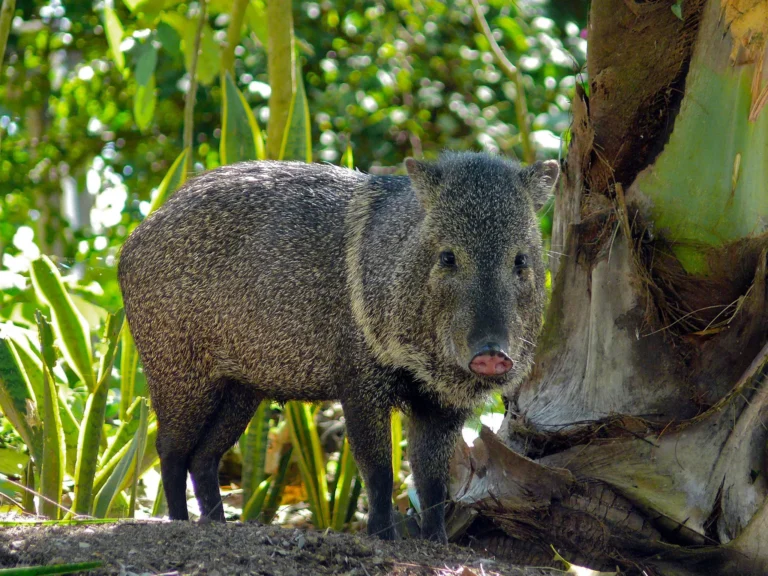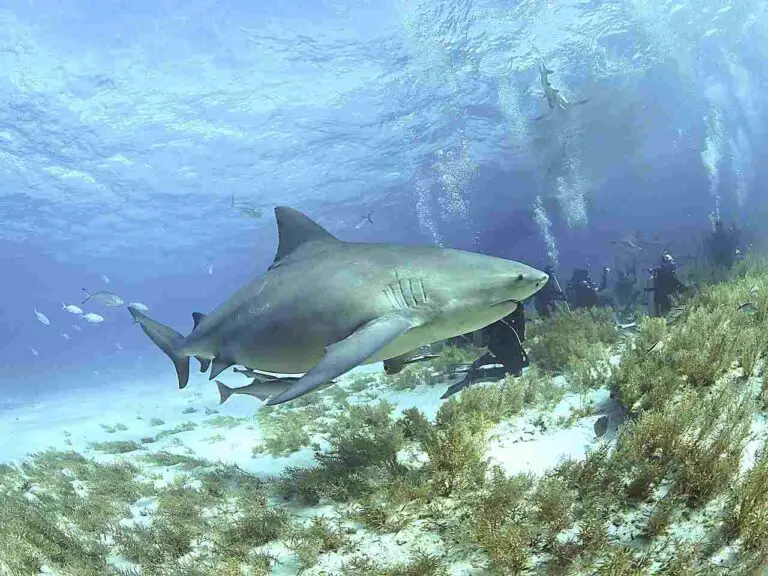23+ Dangerous Animals In Ireland And Their Characteristics
1. European Adder (Common Viper)
The European Adder, also known as the Common Viper, is Ireland’s only native snake species and is considered one of the most dangerous animals on the island. Recognizable by its distinctive zigzag pattern along its back, the adder is typically found in heathland, bogs, and woodland areas. Despite its venomous bite, the adder is generally shy and will avoid human contact if possible. However, when threatened or accidentally stepped on, it can bite, delivering venom that, while rarely fatal, can cause significant pain, swelling, and other medical complications. Visitors to areas where adders are known to inhabit should exercise caution, wear appropriate footwear, and be mindful of their surroundings to avoid any unwanted encounters.
2. Irish Wolfhound
The Irish Wolfhound, known for being one of the tallest dog breeds in the world, is a gentle giant with a history rooted in ancient Ireland. Originally bred for hunting wolves and other large game, this breed possesses great strength and speed. Despite their imposing size and fearsome name, Irish Wolfhounds are generally gentle and friendly. They make excellent companions but require a lot of space and exercise to stay healthy and happy. While not inherently dangerous, their sheer size and strength require careful training and management to avoid accidental harm.
3. Badger
The badger in Ireland is a stocky, burrowing mammal known for its distinctive black-and-white face markings. These nocturnal creatures are typically found in woodlands and hedgerows, living in complex underground burrow systems called setts. Badgers are generally not dangerous to humans, but they can be aggressive if threatened or cornered. They have strong jaws and sharp claws, which they use to dig and defend themselves. Due to their role as a reservoir for bovine tuberculosis, badgers can also pose an indirect risk to cattle and other livestock.
4. Red Fox
The red fox is a common sight in Ireland’s countryside and urban areas. With its striking reddish fur and bushy tail, the red fox is both admired and reviled. Although generally shy and elusive, foxes can become bold in their search for food, sometimes raiding bins or livestock pens. While not typically dangerous to humans, they are opportunistic predators and can pose a threat to poultry and small pets. Foxes are also known carriers of various diseases, including rabies (though rabies is not currently a concern in Ireland), making caution advisable in interactions with them.
5. European Otter
The European Otter is an agile and sleek aquatic mammal commonly found in Ireland’s rivers, lakes, and coastal areas. Known for their playful behavior and skilled swimming abilities, otters are generally not considered dangerous to humans. However, like any wild animal, they can be unpredictable and aggressive if cornered or protecting their young. Otters primarily feed on fish and aquatic invertebrates, and they play an important role in maintaining the health of aquatic ecosystems. Despite their generally docile nature, it’s best to observe them from a distance to avoid provoking an aggressive response.
6. Grey Seal
Grey seals are large marine mammals commonly found along Ireland’s coasts and islands. Recognizable by their elongated snouts and mottled fur, these seals are known to be curious but can be aggressive if approached too closely, especially during the breeding season. They are powerful swimmers and have strong jaws, which they use to catch fish and other prey. While generally not a direct threat to humans, caution is advised when encountering grey seals, as they can deliver painful bites if they feel threatened or cornered.
7. Common Frog
The common frog is a widespread amphibian found throughout Ireland, known for its smooth, moist skin and distinctive croaking calls. Although not typically considered dangerous, common frogs can carry parasites and diseases that could potentially harm other wildlife or pets. They play an important role in the ecosystem by consuming insects and other small invertebrates, helping to control pest populations. Frogs are generally shy and will avoid human contact, but it’s best to handle them with care and respect to avoid spreading disease or causing harm to their delicate bodies.
8. European Hedgehog

The European Hedgehog is a small, nocturnal mammal known for its spiny exterior and endearing behavior. Hedgehogs are found throughout Ireland, often in gardens and hedgerows where they forage for insects and other invertebrates. Despite their prickly appearance, hedgehogs are not dangerous to humans. However, their spines can cause discomfort if handled carelessly. Additionally, hedgehogs can carry parasites and diseases that might be transmitted to pets or other wildlife. They play a beneficial role in controlling garden pests, but it’s best to observe them without direct contact to avoid injury or health risks.
9. Stoat
The stoat, also known as the ermine, is a small but fierce carnivorous mammal found throughout Ireland. With its long, slender body and distinctive black-tipped tail, the stoat is an agile hunter that preys on small mammals, birds, and insects. Despite its small size, the stoat can be aggressive and is known for its cunning hunting strategies. Stoats can pose a threat to poultry and other small animals, especially when they enter gardens or farms in search of food. While not inherently dangerous to humans, caution should be taken to avoid unwanted encounters with this agile predator.
10. Long-Eared Owl
The long-eared owl is a medium-sized owl found in Ireland’s woodlands and open areas, known for its distinctive tufted ears and mottled plumage. These nocturnal predators hunt mainly at night, preying on small mammals, birds, and insects. While not dangerous to humans, long-eared owls can be protective of their nests and young, sometimes swooping down if they feel threatened. These owls play an important role in controlling rodent populations, but it’s best to observe them from a distance to avoid disturbing their natural behavior.
11. Barn Owl
The barn owl is a widely distributed owl species in Ireland, known for its ghostly white face and silent flight. These owls are often found in barns, abandoned buildings, and open fields, where they hunt small mammals like mice and voles. Although barn owls are not dangerous to humans, they can be protective of their nests and may react defensively if they feel threatened. They play a crucial role in maintaining the balance of rodent populations, providing a natural form of pest control. Observing them from a safe distance is recommended to avoid disturbing their nesting sites.
12. Common Buzzard
The common buzzard is a large bird of prey commonly found in Ireland’s forests and open countryside. Recognizable by its broad wings and distinctive call, the buzzard primarily hunts small mammals, birds, and reptiles. Although they are not inherently dangerous to humans, buzzards can become defensive when their nests are approached, potentially swooping down to deter intruders. These birds of prey are an essential part of the ecosystem, helping to control rodent populations. To avoid conflict, it’s best to respect their territory and observe them from a distance.
13. Common Kestrel
The common kestrel is a small bird of prey found throughout Ireland, known for its ability to hover in place while hunting. These birds primarily feed on small mammals, birds, and insects, contributing to natural pest control in rural and urban areas. While kestrels are not generally dangerous to humans, they can become aggressive if their nests or young are disturbed. The kestrel’s sharp talons and beak are effective tools for hunting, but they can also be used in self-defense. Observing them from a distance is recommended to avoid provoking an aggressive response.
14. Peregrine Falcon
The peregrine falcon is a powerful and fast-flying bird of prey found throughout Ireland, known for its incredible speed and agility. These birds primarily hunt other birds in mid-air, making them formidable predators in the avian world. Although peregrine falcons are not dangerous to humans, they can be protective of their nests and may react aggressively if they feel their territory is threatened. Their sharp talons and beak are designed for hunting, which can be dangerous if they are provoked. Observing peregrine falcons from a distance is the safest way to enjoy their impressive aerial displays without causing disturbance or harm.
15. Sparrowhawk
The sparrowhawk is a small but fierce bird of prey commonly found in Ireland’s woodlands and gardens. Known for its agile flight and quick hunting skills, the sparrowhawk primarily preys on small birds and mammals. While not inherently dangerous to humans, sparrowhawks can become aggressive when defending their nests or hunting grounds. Their sharp talons and beak make them effective hunters, but they can also pose a risk if provoked or disturbed. Observing sparrowhawks from a distance is the best way to appreciate their agility and grace without risking an aggressive response.
16. Rook
Rooks are large, intelligent birds in the crow family commonly found throughout Ireland, often in groups known as rookeries. These social birds are highly adaptable and can be found in rural and urban areas, feeding on a wide variety of foods, including insects, grains, and carrion. Although rooks are not generally dangerous to humans, they can be aggressive if they feel threatened or if their nesting sites are disturbed. They have strong beaks and can deliver painful pecks if provoked. To avoid conflicts with rooks, it’s best to keep a respectful distance and avoid disturbing their nesting areas.
17. Common Raven
The common raven is a large, intelligent bird found in Ireland’s woodlands and mountains. Known for its glossy black feathers and distinctive call, the raven is highly adaptable and can be found in various habitats. Ravens are generally not dangerous to humans but can be aggressive when defending their territory or food sources. With their strong beaks and sharp claws, they can cause injury if provoked. Observing ravens from a distance and respecting their territory is the best approach to avoid unwanted encounters.
18. Hooded Crow
The hooded crow is a common bird found throughout Ireland, known for its gray and black plumage and intelligence. These birds are opportunistic feeders, consuming a variety of foods, including insects, grains, and small animals. Although not inherently dangerous, hooded crows can be aggressive when protecting their nests or food sources. They may attack other birds or small animals and can become a nuisance in urban areas. To avoid conflict with hooded crows, it’s best to avoid disturbing their nesting sites and maintain a safe distance.
19. Feral Goat
Feral goats are descendants of domesticated goats that have returned to a wild state, often found in Ireland’s mountainous and coastal regions. These animals are hardy and adaptable, feeding on a variety of vegetation. While generally not aggressive, feral goats can become defensive if threatened or cornered, using their sharp horns to defend themselves. They can also cause environmental damage by overgrazing, leading to erosion and habitat loss. To avoid conflict with feral goats, it’s best to observe them from a distance and avoid provoking them.
20. Wild Boar
Wild boars are large, powerful animals that have been reintroduced to Ireland in some areas. Known for their stocky build and tusks, wild boars can be aggressive, especially during breeding seasons or when protecting their young. They are omnivorous and can cause significant damage to crops and vegetation. Although rare, wild boars can pose a danger to humans if they feel threatened or cornered. It’s best to avoid wild boars and keep a safe distance to prevent confrontations.
21. Pygmy Shrew
The pygmy shrew is a tiny mammal found throughout Ireland, often in woodlands and grasslands. Despite its small size, the pygmy shrew has a voracious appetite and feeds on insects and other invertebrates. These creatures are generally not dangerous to humans, but their rapid metabolism requires them to be active and aggressive in their pursuit of food. Although unlikely to cause harm, it’s best to observe them without direct contact to avoid spreading any potential diseases they might carry.
22. European Hare
The European hare is a large mammal commonly found in Ireland’s grasslands and fields. Known for its long ears and powerful hind legs, the hare is a fast runner and skilled at evading predators. Hares are generally not dangerous to humans, but they can be aggressive if threatened, using their strong legs to deliver powerful kicks. While not a direct threat, it’s best to maintain a safe distance and avoid disturbing hares in their natural habitat to prevent potential harm.
23. Wood Mouse
The wood mouse is a small rodent found throughout Ireland, often in woodlands and gardens. Although not inherently dangerous, wood mice can carry parasites and diseases that may be harmful to other wildlife or humans. They are primarily nocturnal and feed on seeds and insects. While they are unlikely to cause harm directly, wood mice can become a nuisance if they infest homes or other structures. Maintaining a clean and secure environment can help prevent infestations and reduce potential risks.
24. European Eel
The European eel is a long, snake-like fish found in Ireland’s rivers and coastal waters. These eels have a complex lifecycle, migrating between freshwater and saltwater during their lives. While generally not dangerous to humans, European eels can be aggressive if handled or threatened. They have sharp teeth and powerful bodies, allowing them to inflict bites if provoked. It’s best to observe European eels in their natural habitat and avoid direct contact to prevent injury.
| Animal | Description |
| European Adder |
Ireland’s only native snake, venomous but generally shy.
|
| Irish Wolfhound |
Large breed, strong and gentle but requires careful handling due to size.
|
| Badger |
Stocky, nocturnal, can be aggressive if threatened, carries bovine tuberculosis.
|
| Red Fox |
Common in Ireland, opportunistic, may raid bins or livestock pens, can carry diseases.
|
| European Otter |
Aquatic mammal, usually not dangerous but can be aggressive if cornered.
|
| Grey Seal |
Marine mammal, generally curious, aggressive during breeding season, has strong jaws.
|
| Common Frog |
Amphibian, not typically dangerous, but can carry parasites and diseases.
|
| European Hedgehog |
Spiny mammal, not dangerous to humans but can carry parasites and cause discomfort if handled carelessly.
|
| Stoat |
Agile carnivore, aggressive when threatened, preys on small mammals and birds.
|
| Long-Eared Owl |
Nocturnal bird of prey, not generally dangerous, can be protective of nests.
|
| Barn Owl |
Bird of prey with distinctive white face, not dangerous to humans but protective of nests.
|
| Common Buzzard |
Large bird of prey, aggressive when defending territory, helps control rodent populations.
|
| Common Kestrel |
Small bird of prey, aggressive when defending territory, hunts small mammals and birds.
|
| Peregrine Falcon |
Fast-flying bird of prey, aggressive when protecting nests, sharp talons, and beak.
|
| Sparrowhawk |
Small but fierce bird of prey, protective when defending nests, has sharp talons and beak.
|
| Rook |
Large crow family bird, opportunistic, aggressive when threatened or defending nests.
|
| Common Raven |
Large, intelligent bird, aggressive when defending territory, has strong beak and claws.
|
| Hooded Crow |
Opportunistic feeder, aggressive when protecting nests, can be a nuisance in urban areas.
|
| Feral Goat |
Wild goats, generally not aggressive but defensive if threatened, can cause environmental damage.
|
| Wild Boar |
Large, powerful animal, reintroduced, aggressive, especially during breeding seasons.
|
| Pygmy Shrew |
Small mammal, not dangerous to humans, aggressive in pursuit of food, can carry diseases.
|
| European Hare |
Large mammal, not dangerous to humans but can deliver powerful kicks when threatened.
|
| Wood Mouse |
Small rodent, can carry parasites and diseases, can be a nuisance if infesting homes.
|
| European Eel |
Long fish, generally not dangerous but aggressive if handled or threatened, has sharp teeth.
|
